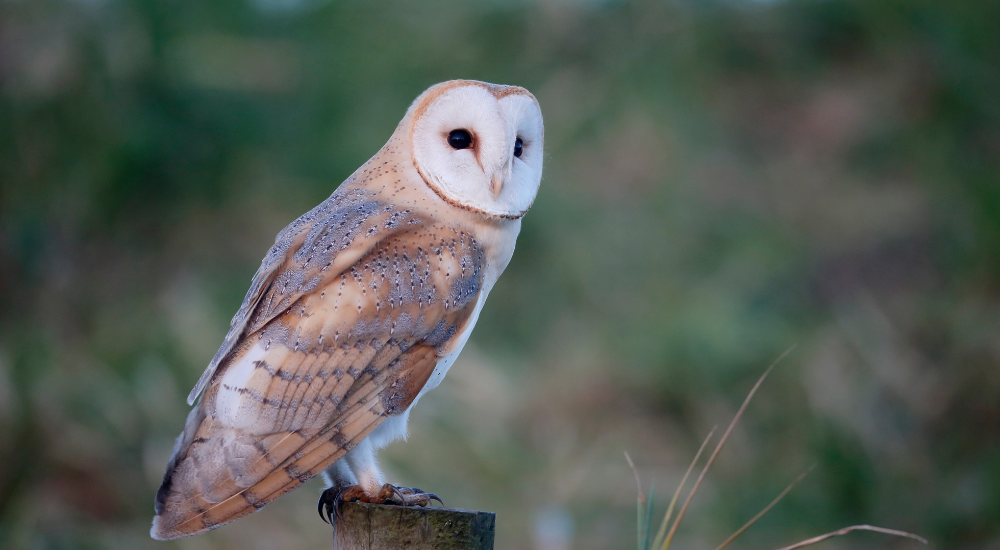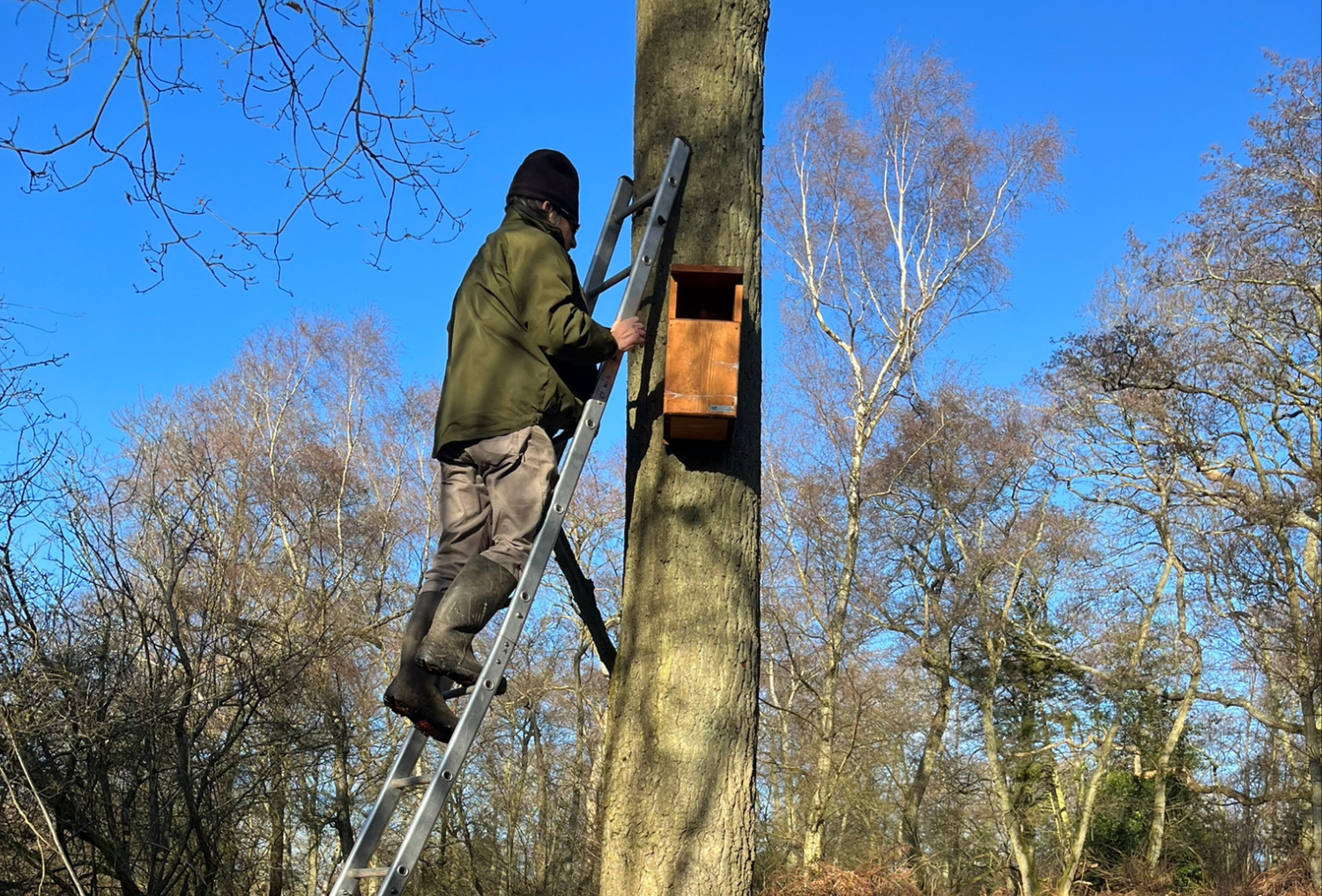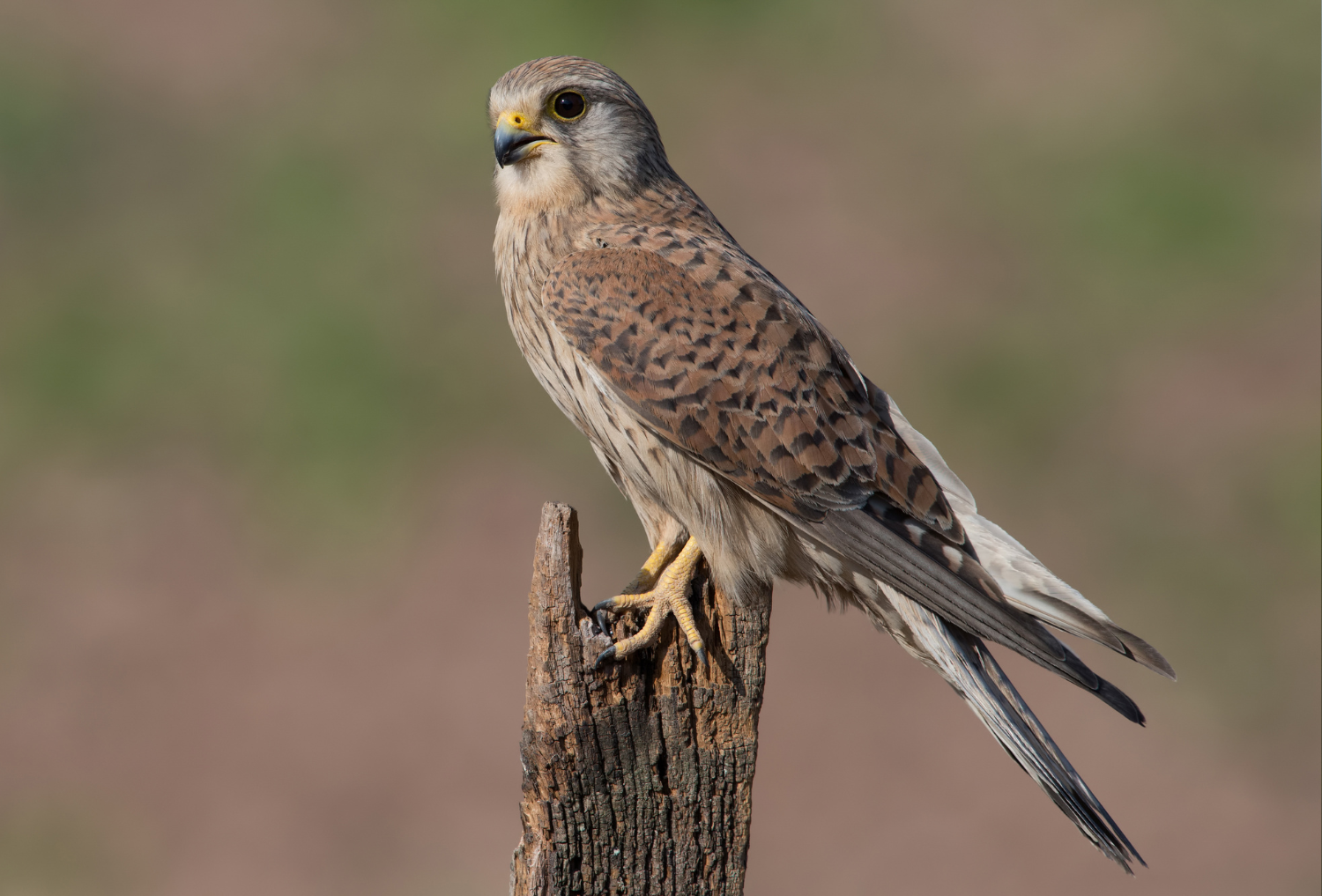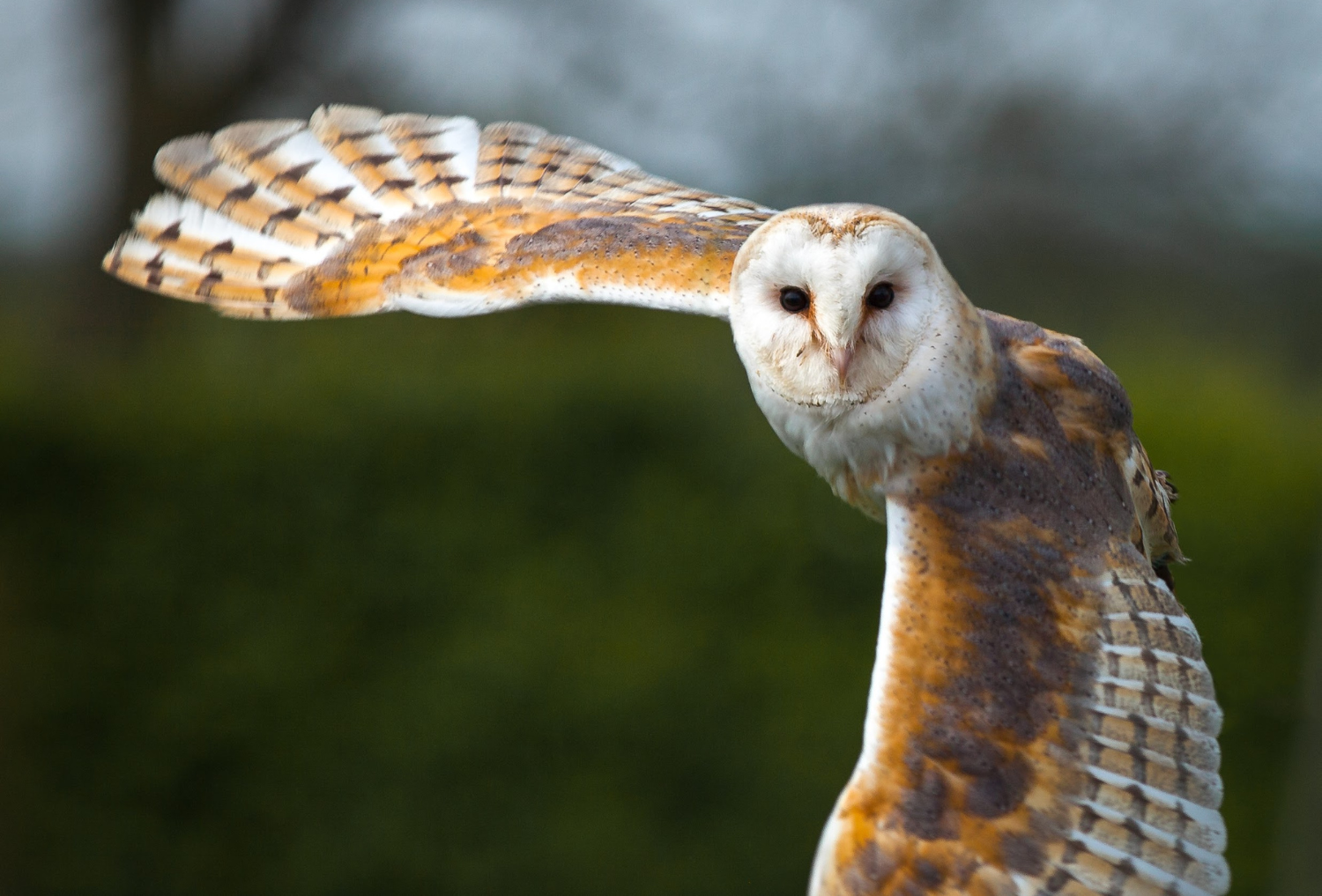
Over 10 years of bird of prey monitoring in the Forest
Since 2011, the South Warwickshire Barn Owl Survey (SWBOS) group, headed up by John and Ros Matthews and Roger Juckes, have been surveying bird of prey nest boxes across the Heart of England Forest. Over this time, the number of boxes has grown to 131 in 2022 and include boxes for barn owl, kestrel, little owl, and tawny owl.
The importance of bird boxes in the Forest
Barn conversions, dilapidation of small field hovels, and the reduction of large, cavernous trees is the main reason for the reduction of nesting sites for barn owls. Therefore, without boxes, barn owls would struggle to find many breeding sites; over 80% of barn owls now breed in boxes. Recently, the RSPB Worcester and Malvern group have installed two barn owl boxes and one kestrel box at the Heart of England Forest site at Naunton Beauchamp, as well as completing a monthly bird survey there. We hope to see these boxes being used, too, over the coming years.

Surveying the bird of prey boxes
The process of surveying the boxes involves visiting each box multiple times a year to check if and how it is being used, then putting a metal ring on the leg of any birds present, known as bird ringing. Bird ringing provides data which cannot otherwise be collected if the identity of a specific individual bird is not known, although the sensitivity of birds to ringing requires bird ringers to have many years of experience before being licenced to complete this legally.
Details of ringed chicks and electronic nest record cards are collated and sent the British Trust for Ornithology (BTO), the main organisation monitoring bird populations in the UK. This helps provide information on the population dynamics of all species on a national scale, not just locally within the Forest.
What makes for successful breeding conditions
The key to the successful breeding of all birds is sufficient food to raise chicks, together with reasonable weather. Many birds of prey, including barn owls, kestrels, and tawny owls, depend on good numbers of small mammals (voles, mice, and shrews), not only to feed themselves and get in a good condition to breed, but also to feed their young. Vole numbers naturally fluctuate on a three to four year cycle.
In poor years, some owls do not breed and those that do only raise small broods. In good years most owl pairs breed and have larger broods. 2014 for instance was generally recognised as the best year in living memory for breeding birds of prey when there was an abundant supply of food. Due to this fluctuating cycle, to get a good understanding of population, surveys must be carried out over at least a four-year period.
We have had some excellent years for barn owls and kestrels over the last decade. Ideal habitat for voles, and therefore for hunting barn owls, is rough grassland with a litter layer at least 70 mm deep, of which there is plenty of in our youngest plantations and along our new woodland rides. It will be interesting to see as the trees grow and the canopy expands, whether the wide rides across the Forest will provide sufficient foraging habitat to maintain the population of barn owls, although no effect has been observed so far.
On the flipside, the Amber Listed tawny owl (Birds of Conservation Concern | BTO - British Trust for Ornithology) may increase as the young trees mature along woodland edges and rides, providing excellent perching spots for tawny owls to hunt from.
2022: a successful year for birds of prey in the Forest?
Barn owl
2022 was the best year for paired barn owls and the second best for chicks since recording in the Forest began, with a total of 24 breeding pairs with 64 chicks, one nonbreeding pair, and one single individual. The hot summer last year would have reduced the growth of young grass and had a negative effect on vole populations, thus some pairs struggled to raise their young from their first broods and it discouraged almost all pairs from attempting any second broods.

Kestrel
Kestrels experienced a poorer year in 2022 with only six breeding pairs and 21 chicks recorded in comparison to 11 pairs and 41 chicks five years ago. However, when pairs decide not to breed, they do not always visit the breeding site and therefore the absence of birds at a box does not mean that the territory is vacant. If you see a rectangular open-fronted box in a relatively open habitat in the Forest, this will be a kestrel box. Barn owl boxes are larger, triangular, and with a small hole entrance compared to the kestrel boxes.

Tawny owl
Tawny owl numbers have fluctuated in the period between 2014 and 2022, ranging from five to 13 breeding pairs. 2022 was not a good year for tawny owls as less than half the number of breeding pairs were recorded compared to 2021, with only six of those recorded breeding, and only three chicks ringed. These were all recorded in the Spernal area of the Forest, however some sites in Dorsington have been more successful. Like barn owls, tawny owls do not breed if their food availability is poor and therefore it is not expected that boxes will be used each year.

Little owl
Little owl nest records are comparatively low compared to the other owls due to there being fewer specialist boxes and natural cavities (usually found in apple trees) available to them. There have been sightings in Spernal of little owl, and they were confirmed as breeding in Dorsington last year, with only one pair recorded.
Supporting the wildlife in the Forest
You can play an important role in our vital mission of creating and conserving a huge broadleaf Forest where wildlife thrives by becoming a Friend of the Forest today.
If you would like to find out more about becoming a Friend of the Forest, enabling us to continue the conservation of the magnificent birds of prey that call the Forest their home, visit: Become a Friend of the Forest | Heart of England Forest.
Thanks to Becky Dennison, Sam Macvie, and Roger Juckes from the SWBOS group, who all contributed to this article.




